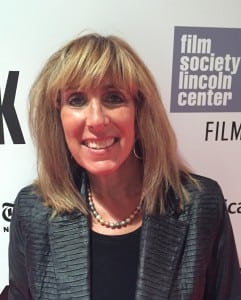
In a world focused on shareable content, we struggle to find ways to make our stories stand out. What makes someone read what we write, watch our video and more important, remember it and engage others by retelling it?
Great films clearly and dramatically illustrate the importance of memorable, shareable story content, a scene, a monologue or just a line. Some favorites: Michael Douglas’ infamous “Greed is good” monologue in Wall Street. Or Bette Davis’ line in All About Eve, “Fasten your seatbelts, it’s going to be a bumpy night.” These scenes, monologues and lines are vivid, crisp and unique. And these films we watch over and over again. Why? They have what we call re-watchability.
How can you make the content you develop so powerful others want to re-watch it as we do with great films? What makes the Wizard of Oz, E.T. or The Godfather among some of the most-viewed films of all time? There are specific elements we can learn from them that will make our content more appealing and memorable.
Pitch your story the film way. As PR pros, we routinely pitch stories to reporters, tell stories to our employees or insert them into speeches. But we can learn from the pitch process in the film industry. Filmmakers carefully craft pitches to win over studio executives. Their pitches follow the narrative structure of story. Does yours? When was the last time you test-drove your pitch, ensuring it effectively presented a tight synopsis of your story’s plot? By pitching your story, you will get insight into whether it works before you reach out to a news outlet, insert it into a speech or use it in your blog. Ensure your story is not just one you want to tell but one that others want to hear.
Grab them! A YouTube video just has seconds to draw in viewers and keep them there. With multiple competing channels and distractions, content must be laser-focused and connect quickly with people. The best ways to do this are by creating a way in early and decisively. Being bold. Declarative. Simple. And setting up what is to come next with anticipation. Recall the opening line from Martin Scorsese’s masterpiece Goodfellas, “As far back as I can remember, I always wanted to be a gangster.” With that opening we are all in.
Keep them there and build. The story has to build and we need to be able to follow it. Alfred Hitchcock’s work illustrates how he moved his films along, held your attention and mounted suspense with such notables as Rear Window, The Birds or Psycho. In film, screenwriters compose a “beat sheet” that contains the major elements of the story; each beat moves the story along, from one plot point to the next. While it’s likely you lack the luxury of the length of a feature film, in creating your own stories it is even more important to make each plot point work. Your story needs to build and create a reason for others to stay engaged.
Point of view. We often like to tell stories from the same point of view. I suggest you change it up and find new ways to explore the same story. For example, if you are in the healthcare sector, instead of telling the story from the patient’s point of view, consider the doctor’s point of view, or that of another caregiver or a family member. Doing this will help your stories avoid being predictable. It will create drama and diverse perspectives. In The Shawshank Redemption, we hear the voice of narrator Red (Morgan Freeman), learn his insights and come to understand his feelings as he tells the story of fellow inmate Andy Dufresne (Tim Robbins), and in so doing we hear Red’s story too.
Don’t get bogged down. This happens often. In some organizations many people need to weigh in on a story, a video or piece of content. This results in things getting watered down, overly complicated or filled with unnecessary information. Being discerning is critical. Push back on those content contributors. They can be story detractors. This is not about making sure everyone gets a sound bite in the film or pays tribute to every aspect of a business accomplishment. Ultimately, it is whether anyone will pay attention, connect, enjoy and then (hopefully) share the story. It needs to move, as we said above. Remember that you have only seconds to engage with someone on YouTube; if your story starts to get bogged down, it will be in trouble. Each story element needs to build on the next and add to the total experience. Keep the story tight. One thing great films have in common is that they are well edited.
A satisfying conclusion. Like a three-act structure in a story, we need to have a beginning, middle and end…and the end has to be satisfying. Without an ending that works, people often will forget what the story was about. The story has to have a point, and that point is focused largely on the story’s ending. We love the end of Casablanca: Even though Humphrey Bogart does not end up with Ingrid Bergman, he and Claude Rains walk off into the mist as he says, “Louis, I think this is the beginning of a beautiful friendship.” As in all great films, the litmus test is whether we care. If people don’t care at the end of your story, it will become lost and forgotten.
So when you overhear your story being retold in the lunchroom, discussed in conversation or shared online, that is the ultimate compliment.
CONTACT: @jfstrayer
This article originally appeared in the March 28, 2016 issue of PR News. Read more subscriber-only content by becoming a PR News subscriber today.
